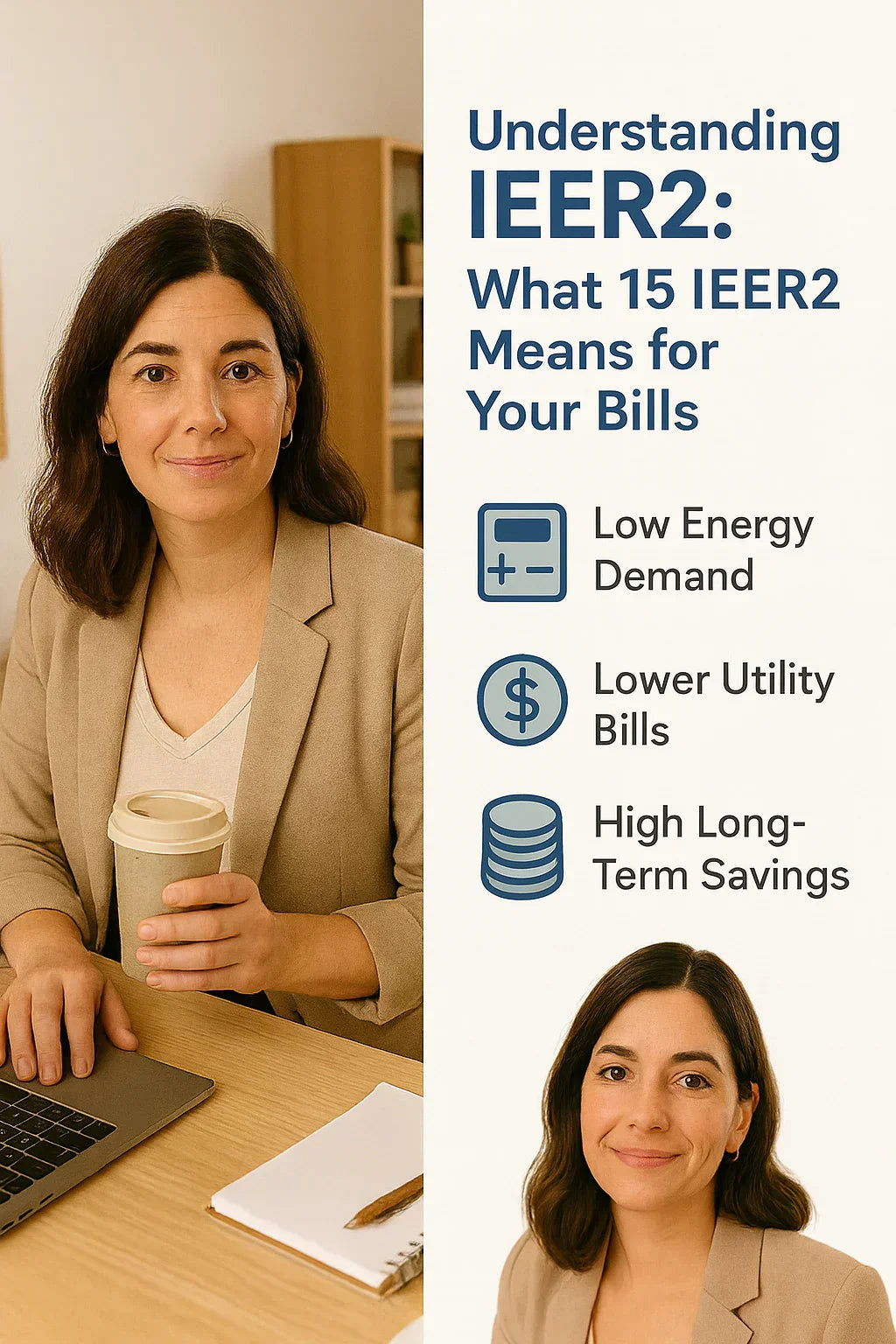When you’re shopping for a commercial HVAC system, you’ll see efficiency ratings everywhere—SEER, EER, and now IEER2. These aren’t just numbers on a spec sheet—they directly impact how much you’ll pay each month in energy costs.
One of the standout features of the Daikin 10 Ton 15 IEER2 Packaged Air Conditioner is its efficiency rating. But what exactly does 15 IEER2 mean? And why should business owners, property managers, and contractors care?
This guide breaks down IEER2 in plain language so you can see how it affects your bottom line.
📊 What Is IEER2?
IEER2 stands for Integrated Energy Efficiency Ratio (Version 2). It’s a standard set by the U.S. Department of Energy (DOE) to measure how efficiently commercial HVAC systems perform throughout the year.
Think of IEER2 as the commercial cousin of SEER2 (used for residential).
-
EER = Efficiency at peak, full load.
-
SEER/SEER2 = Seasonal efficiency (residential).
-
IEER/IEER2 = Seasonal efficiency (commercial).
IEER2 specifically measures part-load efficiency, which is critical because most commercial systems don’t run at full blast all the time. Instead, they cycle, modulate, or run at partial capacity—especially in spring and fall.
🆚 IEER vs. IEER2: What Changed?
The DOE updated efficiency standards in January 2023, moving from IEER to IEER2.
Key changes:
-
Stricter testing conditions that better represent real-world usage.
-
More accurate measurement of duct losses, external static pressure, and fan energy use.
-
IEER2 ratings are generally lower than IEER because they’re more realistic—but they allow apples-to-apples comparisons between brands.
📖 Learn more: DOE 2023 HVAC Efficiency Standard Updates
💡 Why 15 IEER2 Is a Big Deal
A rating of 15 IEER2 on a 10-ton commercial packaged AC means the system is among the more efficient units available today.
Translation for your energy bill:
-
Higher IEER2 = lower energy consumption.
-
Lower energy consumption = smaller utility bills.
Example:
-
A 10-ton system with 12 IEER2 vs. 15 IEER2 could mean 15–20% energy savings annually.
-
In a 5,000 sq. ft. office with average cooling demand, that could translate to $2,000–$3,000 saved every year.
🏢 Why IEER2 Matters in Commercial Spaces
Commercial buildings often have variable occupancy and loads:
-
Restaurants: full kitchen heat + varying dining traffic.
-
Offices: steady load during the day, near-zero at night.
-
Retail: fluctuating occupancy, large lighting loads.
Since your AC isn’t always running at 100% capacity, IEER2 efficiency helps predict real-world savings, not just lab performance.
💡 Resource: ASHRAE HVAC Efficiency Standards
📏 The Math: How IEER2 Saves You Money
IEER2 efficiency is calculated by testing a unit at four different load points (100%, 75%, 50%, 25%) and then weighting the results.
Example with two 10-ton systems:
-
System A (12 IEER2) = ~10,000 kWh annually.
-
System B (15 IEER2) = ~8,500 kWh annually.
At $0.15/kWh, that’s $225 savings per month or $2,700 annually. Multiply that by 15 years, and you’re looking at $40,000+ in lifetime savings—just from choosing a higher-efficiency model.
⚖️ IEER2 vs. SEER2: Key Differences
| Feature | SEER2 (Residential) | IEER2 (Commercial) |
|---|---|---|
| Applies to | Homes, small spaces | Offices, retail, restaurants |
| Load focus | Seasonal, part load | Seasonal, multiple load points |
| Typical size | <5 tons | 5–250 tons |
| Impact | Lower homeowner bills | Lower business operating costs |
👉 Bottom line: If you’re comparing commercial rooftop systems, IEER2 is the rating that matters.
🧾 Rebates & Incentives for High IEER2 Systems
Many utility companies and state programs offer rebates for high-efficiency HVAC systems.
-
Systems with 15 IEER2 or higher often qualify for incentives.
-
Check the DSIRE Database for local programs.
-
Potential tax deductions under the Commercial Buildings Energy-Efficiency Tax Deduction (Section 179D).
🔧 Other Factors That Affect Your Bills
While IEER2 is critical, don’t forget other variables:
-
Thermostat control: Smart thermostats maximize part-load savings.
-
Maintenance: Dirty coils or clogged filters can cut efficiency by 10–20%.
-
Building envelope: Poor insulation negates high-efficiency equipment.
-
Load matching: Even the best 15 IEER2 unit wastes energy if oversized.
💡 Resource: ENERGY STAR HVAC Maintenance Guide
🔮 Future Outlook: Why IEER2 Is Here to Stay
With rising energy costs and sustainability regulations, IEER2 will only grow in importance.
-
Many cities are adopting building performance standards tied to efficiency.
-
Tenants increasingly expect green certifications (LEED, ENERGY STAR).
-
Equipment with 15+ IEER2 helps future-proof your investment.
📖 Resource: EPA – Energy Efficiency in Commercial Buildings
✅ Final Verdict
If you’re evaluating whether to install a Daikin 10 Ton 15 IEER2 Packaged AC, here’s the takeaway:
-
15 IEER2 = strong efficiency performance for commercial rooftop systems.
-
It means thousands in annual savings, particularly for mid-sized buildings.
-
When paired with proper sizing, smart controls, and regular maintenance, this efficiency rating can cut operating costs and boost sustainability.
Bottom line: A system with 15 IEER2 isn’t just about comfort—it’s about protecting your bottom line.
In the next Topic we will know more about: Daikin vs. Trane vs. Carrier: Which 10-Ton Packaged AC Should You Choose?







